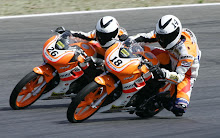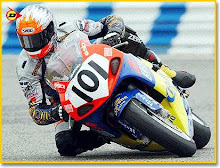With the emphasis of a sport bike being on speed, acceleration, deceleration, and maneuverability, there are certain design elements that most motorcycles of this type will share. Sport bikes have comparatively high performance engines resting inside a lightweight frame. The combination of these help maintain structural integrity and chassis rigidity. Braking systems combine higher performance brake pads and multi-piston calipers that clamp onto oversized vented rotors. Suspension systems are advanced in terms of adjustments and materials for increased stability and durability. Front and rear tires are larger and wider than tires found on other types of motorcycles to accommodate higher cornering speeds and greater lean angles. Fairings may or may not be found on a sport bike. When used, the fairings are shaped to reduce aerodynamic drag as much as possible and less as wind protection for the rider. The performance of some stock sport bikes is so great they can be used on a race track right off the showroom floor. It is commonly said of these motorcycles that you can race them on Sunday and ride them to work on Monday.
These overall design traits mean sport bikes are generally less practical for street use when compared to most other types of motorcycles. There is little in the way of extra features or creature comforts like those present on touring motorcycles such as center stands, provisions for saddle bags, large windshields, or fairings providing protection from rain. Rider position and ergonomics are compromised in favor of weight distribution and aerodynamics. This generally means higher foot pegs that move the legs closer to the body and more of a reach to a lower set of hand controls which positions the body and weight forward and over the tank.
The term crotch rocket is slang for some types of sport bikes, mainly super sport and super bikes. The name is derived from the way the rider sits on the bike and from the speed and acceleration or which these bikes are capable. A sport bike's foot pegs and shifter are located farther back than a conventional or 'cruiser' motorcycles; this puts the rider in a position that is more streamlined and aerodynamic and places the rider's crotch in very close contact with the seat.










